With August being Women’s month, we thought we’d shine a light on some of the amazing women in our local industry and we’re starting our series with Kenilworth Racing’s Teresa Esplin.
With her mane of red hair, frequently issuing instructions via her walkie-talkie, while marching en route to see to another problem, Teresa Esplin cuts a distinctive – and busy – figure on race days. She has the distinction of being South Africa’s first ever female starter and is now Kenilworth Racing’s Racing Liaison Officer.
About Teresa
Although of Irish descent, Teresa was born in Cape Town’s Kingsbury Hospital. “My gran had some involvement in the setup of Kingsbury’s early days, but I don’t know too much about it. My family’s not big on its own history.”
The family spent a number of years in Ireland’s Mullingar, County West Meath before coming back to South Africa and Teresa started riding lessons. “That’s when the horse hair virus hit,” she laughs. No-one in my family is into horses. My dad was an animal welfare inspector at one stage, but that’s the only animal connection I know of.”
Teresa did her schooling at Sweet Valley and then boarded at Rustenberg Girls High for 5 years. “I loved it. I loved the routine of having a bell to wake me up, a bell for breakfast, a bell to go to school. Incidentally, when you’re in Standard 6, you all have a matric ‘fag mistress’ and mine was Tessa Koster, so that was my earliest introduction to anything to do with racing.”
By high school, the horse virus was fairly advanced and Teresa did her Standard 9 work shadowing with Diz Bostock, a neighbour who did spelling and pre-training in the Klein Dassenberg area. “I spent three days riding work and got to ride horses like The Eiger and Complete Lee. I nearly died at the end of those three days. I’d gone from being a hack rider mucking about in the bush on weekends with my pony, to riding short. I was so sore I couldn’t go back to school. My headmistress thought I was bunking and gave me 48 hours detention!”
Early career
“When I finished matric, I wasn’t 100% sure where to go from there, so I ended up getting a job with Janet Burns, who was also in the area and ran a pre-training and spelling farm. In fact, when our matric results were published, my mom had to go and fetch mine because I was already working. I backed a lot of babies while working for Janet and learned a lot from her.”
When the Burns’ decided to give up El Lions, Teresa got a job with Glen Kotzen and worked at their Philippi base for 4 years. She then did a stint as a stud groom at Rathbarry Stud in Ireland, doing everything from foaling to yearling prep and exercising the stallions, an experience she thoroughly enjoyed.
Why did she come home? “I don’t know. I probably should have stayed. The money was better and my family is all there and I was at the right age to make a go of it, but I didn’t,” she says pragmatically. Back in SA, Teresa started studying as a legal PA, working part time for Eric Sands. On completing her course, she worked at a conveyancing firm for a few months, but realised it wasn’t for her and went back to Eric’s.
“Somewhere in between I worked as a photo finish judge for the NHRA as well, but eventually I had to choose between that or working as a licensed employee in Eric’s yard, so I stopped judging.”
First female starter
Teresa left Eric’s yard in 2005 and went back to office work, while working part-time as the very first female starter at the Turf Club. “It came about because I approached the Jockey Club for something to do. There was a job for a trainee starter and I jumped at the opportunity. Eddie Seymour was the starter at the time with Cecil van As. I worked 4 days a week for a Recruitment Consultant and then 2 days as a starter and I did that for about a year back in 2006. When I saw I wasn’t going to get the starter job full time, I resigned and went to work in the office 5 days a week, although the club asked me to stay on on weekends while they trained up Fred Bosman.”
“It’s definitely been one of my favourite jobs. I thoroughly enjoyed working at the start although I couldn’t put my finger on exactly why. It’s a different aspect of racing that I really enjoyed. There’s a level of responsibility that you can’t compare to anything else. You need to know the horses and their race day quirks, which are different to normal days – just like the riders. I don’t know why I enjoyed it so much, but maybe I didn’t do it for long enough, who knows” she quips.
Racing Liaison Officer
Things continued in that vein until she got her current job as Racing Liaison Officer, at which point she had to resign as the starter again. “I found out about it through the grapevine. Someone in the industry felt I was the person for the job and told me to apply, so I did and here I am,” she says brightly. “I started in June 2007, a few months after Dean Diedericks.”
Her job encompasses “a lot of admin and anything to do with the trainers”. She deals with queries, stable allocations and leases as well as keeping an eye on statistics such as gallops, runners to boxes, etc. “It’s a weird position, because I’m not management, but I feel a lot of responsibility on my shoulders. It’s tricky because I have to ride the fence carefully between trying to accommodate trainers’ needs and requirements, while bearing in mind the requirements of the operator who pay my salary. It’s a fine line.” And then, “It’s a good job I ride. It’s probably the most difficult ride of my life, this job,” she reflects.
On race days, she oversees racing. “Kenilworth is a tricky track because we don’t have a track configuration that allows emergency services to follow the horses around. So I watch the horses and if there’s an incident I need to direct people how to get to the incident by the fastest route possible. I also keep an eye on race times as we need to get races off as promptly as possible. If any times needs changing, I need to keep an eye on the racing around the rest of the country and try to accommodate that, while not putting unnecessary pressure on ourselves here.”
Ups and downs
What are the main challenges? “Saying no to trainers’ requests when I know they’re just trying to do the best for their own businesses and their horses.” And the up sides? “There are quite a lot, actually. I’m supposed to visit the training centres weekly or bi weekly, so I always manage to hug ponies over the doors. The trainers know I love my horses, so they are cool with that. I work every Saturday, so I get to take a day off during the week. I usually make that a Friday and when Brett Crawford takes his horses to the beach, I get to ride, which I feel very privileged to do. And I get to watch racing twice a week!”
How does she feel being a woman in the largely male dominated world of racing? “I think women are underrated and not given the credit they deserve. I think it’s sad we don’t have more female trainers in racing. Candice Robinson has done a fantastic job. We all knew she was going to do well, but I think she’s surpassed any milestones anyone might have set for her. We need more like her.”
Songstress
Outside of racing, Teresa goes horse riding with a friend in Morning Star every weekend and Linda Mohr also allows her to exercise Howling Wind. Teresa is also a singer and performs as a duo with her partner Willem as Tminus2. “We perform every second weekend and at the odd private function. It’s something I thoroughly enjoy and it’s a good release for me. We only do covers at the moment, although we are working on some original material, so I may still become famous through music,” she laughs. Aside from Willem, the other loves of her life are her two Rottweilers, Loki and Torro. “They are my children. If I could have horsey children, I would, but unfortunately they don’t quite fit into the budget.”
Industry thoughts
How does she feel about racing’s future? “People say that with the economy struggling, racing is going to suffer – and it is suffering. But look at Zimbabwe – they’re really in trouble and they somehow battle on. I think we have enough people, they may not know enough about the horse, but they are passionate about the industry and will do what they can to keep it going. I know at times it doesn’t look that way, but because of where I am, I know that the will and the passion to keep it going are there.”
How does she think racing could be made more accessible? “I think the general public doesn’t know enough about our industry, and other than maybe the Met or the Queen’s Plate, the only thing that’s in the mainstream media is the bad stuff, which is why there is a negative perception. They won’t pick up on a happy story about an ex racehorse, but they will pick up on a horse starving in Darling. Even though that particular story had a happy ending, the headline is still ‘Starving Horse’ not ‘Rescued Horse’. But people aren’t grabbed by good stories, they’re grabbed by bad stories. Maybe it’s something about humans in general. How does one change that? I don’t know,” she muses.
“We also should be moving away from this elitist image that we keep trying to promote because all we’re doing is alienating people. Very few people have the money to buy a horse outright and I think syndicates like Mathew de Kock and Green Street Bloodstock are setting up are a really good initiative for making racing more accessible to more people. As a former assistant trainer I know that there’s nothing like leading in a winner. Even now, if one of Brett (Crawford)’s horses that I’ve ridden on the beach wins a race, that’s ‘my’ horse. I get really excited about horses – even ones I only get to see at the track. You can see there’s something special about them and more people need to see that. I think the Thoroughbred is a very special and unique animal. I’ve ridden many different breeds, but my heart belongs to the Thoroughbred.”
Have Your Say - *Please Use Your Name & Surname*
Comments Policy
The Sporting Post encourages readers to comment in the
spirit of enlightening the topic being discussed, to add opinions or correct
errors. All posts are accepted on the condition that the Sporting Post can at
any time alter, correct or remove comments, either partially or entirely.
All posters are required to post under their actual name and surname - no anonymous posts or use of pseudonyms will be accepted. You can adjust your display name on your account page or to send corrections privately to the Editor. The Sporting Post will not publish comments submitted anonymously or under pseudonyms.
Please note that the views that are published are not necessarily those of the Sporting Post.
2 comments on “Teresa Esplin”
Leave a Reply
‹ Previous



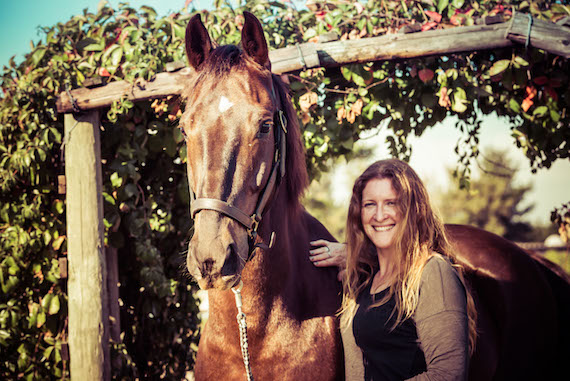
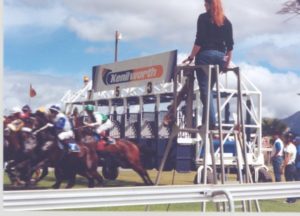
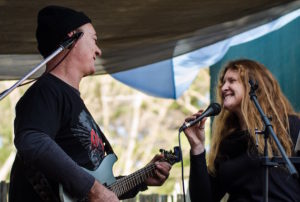

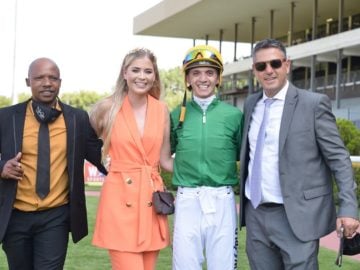
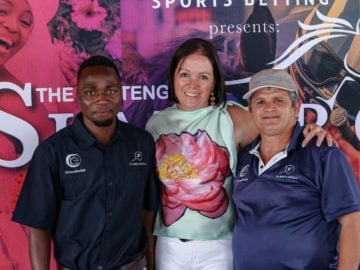
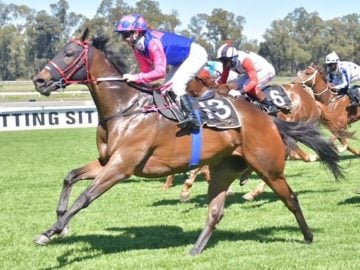
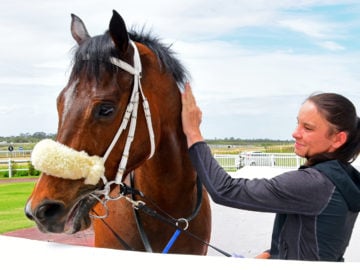
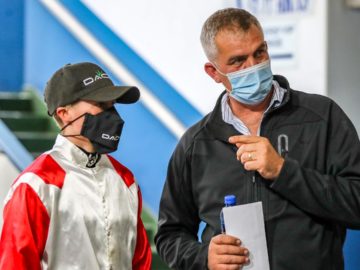






What an awesome write up about an AWESOME woman!! I am proud to call you my friend!!
You do an unbelievable job and help all of us out ALWAYS! Thank you for your amazing assistance!